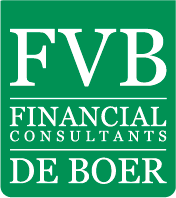
With the property market still booming, one thing I am often asked by clients is whether or not they should buy a second property to rent out.
Owning a second, or even a third, apartment and becoming a landlord is often seen as a relatively easy way of generating extra income, particularly at a time when interest rates are at such a low level.
And, if you cannot buy a second property outright, but do have the income and some savings, it is perfectly possible take out a second mortgage and move into the property rental market.
Interest rates
Be aware that your bank will charge you a higher interest rate for a buy-to-let property – and that can have a major impact on your earnings. An ordinary mortgage will now cost you around 2% in interest for a 10-year fixed period, but if you are buying as an investment, you could be charged double that.
There are, however, some other key things you should think about before you start.
First of all, it is important to find out whether the property you want to buy will fall into the rent-controlled sector (sociale huur) when you let it out.
This is calculated using a complicated point system (puntentelling)– by which a property scores points depending on its size, the facilities and the location. If this adds up to a rent of less than €710 a month, the property will be reserved for people on low incomes, and you won’t be able to charge more than the proscribed amount.
Small properties
If the points total at least 143, then that adds up to a higher rent and the property is in the liberalised market (vrije sector). This means you can rent the property out to whoever you like and charge whatever rent you can get.
As a rule of thumb, in a large city like Amsterdam, the smaller the property, the more likely it will end up rent-controlled. So that 30 square metre studio might not be the great buy-to-let prospect it seems.
There are, of course, some things you can do to boost the points your property has – luxury finishings are worth more and a kitchen work top which is longer than two metres generates seven extra points. And if the apartment has an A energy label, you can get 32 extra points, just like that.
But don’t try and get away with renting a property officially worth €600 a month for €1,200 – tenants have rights and can easily go to a rent tribunal (huurscommissie) to have their monthly payments cut. You could also end up refunding the excess money.
Tenants have rights
You should also think about the rights which tenants have in the Netherlands – which means you can’t just move them out if you have decided to let your children live in the flat, or if you want to sell up.
Basically, if a tenant pays the rent on time, they are protected by the law – whether or not you have drawn up a rental contract. The only way to get a tenant out is to prove in court that your interests are more important than theirs – and that is an expensive process which can take years.
You can, of course, give your tenant a short-term contract, but again, these have strict conditions attached to them as well.
Do the sums
As a landlord you are also required to divide the total amount of rent into basic rent and service costs – which cover items such as cleaning the communal areas and gas and electricity, if it is an all-in contract. You can also add up to 20% of the cost of furniture and furnishings on an annual basis – if you are renting out a furnished flat.
If you are thinking about moving into the buy-to-let market – and after all, there is a desperate shortage of housing in the popular cities – my advice would be to sit down and do the sums in order to see whether it is a wise investment.
Work out what the mortgage and all the other costs add up to (don’t forget letting agency fees and minor repairs) and then see if the rent you will get makes it worth it. Buy-to-let might seem like an easy way of making money – but sometimes it does not add up.
Want to know more?
For more information on buy-to-let mortgages, and an analysis of the costs and returns involved, come and talk to us. You can call us on +31 70 5118788 or get in touch by completing the contact form.


